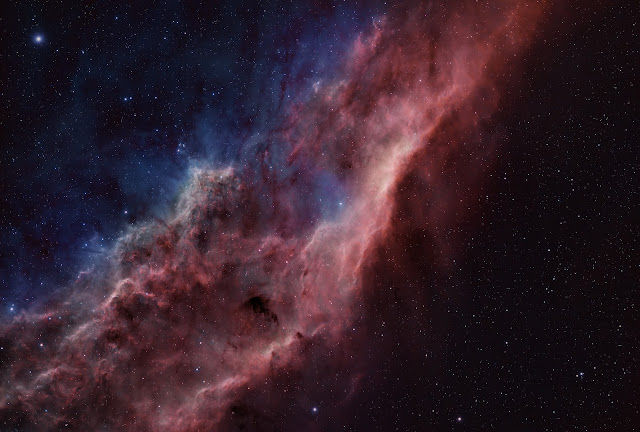 Tuesday night was a good night with reasonable seeing. We that is Myself and fellow BAS Member Richard Harmon had a second opportunity to have an imaging session with his Celestron C9.25. Using the societies new Ioptrom IEQ45 mount (same as my own)We tested and were happy with the balance / polar alignment & collimation. Having made more sense of the instruction manual for the ZWO camera we connected and started up firecapture. A recommended programme that comes with the driver software for image acquisition. It seems to be well respected with a great deal of control. I tested the camera for the first time last week (Pic right) using no gain at all. Initial results of Jupiter last week were under saturated. However the software recommend a setting of 50%, with an active histogram scale showing saturation, a new set of captures were initiated. Dew quickly covered the optics and required de misting every 10 minutes. Inbetween that some nice captures were collected.
Tuesday night was a good night with reasonable seeing. We that is Myself and fellow BAS Member Richard Harmon had a second opportunity to have an imaging session with his Celestron C9.25. Using the societies new Ioptrom IEQ45 mount (same as my own)We tested and were happy with the balance / polar alignment & collimation. Having made more sense of the instruction manual for the ZWO camera we connected and started up firecapture. A recommended programme that comes with the driver software for image acquisition. It seems to be well respected with a great deal of control. I tested the camera for the first time last week (Pic right) using no gain at all. Initial results of Jupiter last week were under saturated. However the software recommend a setting of 50%, with an active histogram scale showing saturation, a new set of captures were initiated. Dew quickly covered the optics and required de misting every 10 minutes. Inbetween that some nice captures were collected. First up was Jupiter. Working at f20 images were much brighter. This will be a learning curve I am sure because the quality is not as good as some I have seen posted, Anyway here is the first effort. The shadow of Callisto can be seen quite clearly. At about half past nine on the disc's edge you can just see the great red spot. Image capture was at 640 x 560 at 35 frames per second approx 4000 frames with the best 65% processed with wavelets in Registax. An unsharp mask and despeckle and colour boost was used in photoshop. This was the best jupiter we got So I turned my attention to the lunar disc whilst hot drinks were being made inside.
First up was Jupiter. Working at f20 images were much brighter. This will be a learning curve I am sure because the quality is not as good as some I have seen posted, Anyway here is the first effort. The shadow of Callisto can be seen quite clearly. At about half past nine on the disc's edge you can just see the great red spot. Image capture was at 640 x 560 at 35 frames per second approx 4000 frames with the best 65% processed with wavelets in Registax. An unsharp mask and despeckle and colour boost was used in photoshop. This was the best jupiter we got So I turned my attention to the lunar disc whilst hot drinks were being made inside.
My first lunar target was Clavius after another de-misting. A run of just 38 seconds a @ 16 frames per second size of 1280 x 960 is the largest size, this does slow up the frames per second though. Like I said a learning curve and a lot of practice needed to get things right!!!
Watching the capture on the screen was amazing. Moments of perfect seeing were staggering as craters came into perfect focus. Only 600 frames capture and the best 80% stacked gave me this one.
 Not sure what happened to Copernicus. It appears the capture was just 7 seconds and about 100 frames. I did not take another shot must have been drinking the coffee at that point? A lovely image though with the walls well defined and central peaks have contrast down the slopes. The view from the top must be amazing.
Not sure what happened to Copernicus. It appears the capture was just 7 seconds and about 100 frames. I did not take another shot must have been drinking the coffee at that point? A lovely image though with the walls well defined and central peaks have contrast down the slopes. The view from the top must be amazing.
The Vallis Alpes or the Alpine valley is a valley feature that bisects the Montes Alpes range. Running for 166km and at it's widest is 10km. Not the best illumination here as there is no shadow or contrast to show the escarpment.
A bit of wandering around landed me on top of Crater Archmedes. Same resolution as before for this 83km crater. No central peaks like Copernicus suggest that the crated floor filled with lava to conceal any peaks. No ejecta ray system either that is usaually associated with the younger craters, telling us of it's early formation. Not so happy with this image, again only a few hundred frames.
I have caught some of the craterlets on the lava fllor so that also takes care of number 83 of the lunar 100.....



.jpg)



No comments:
Post a Comment